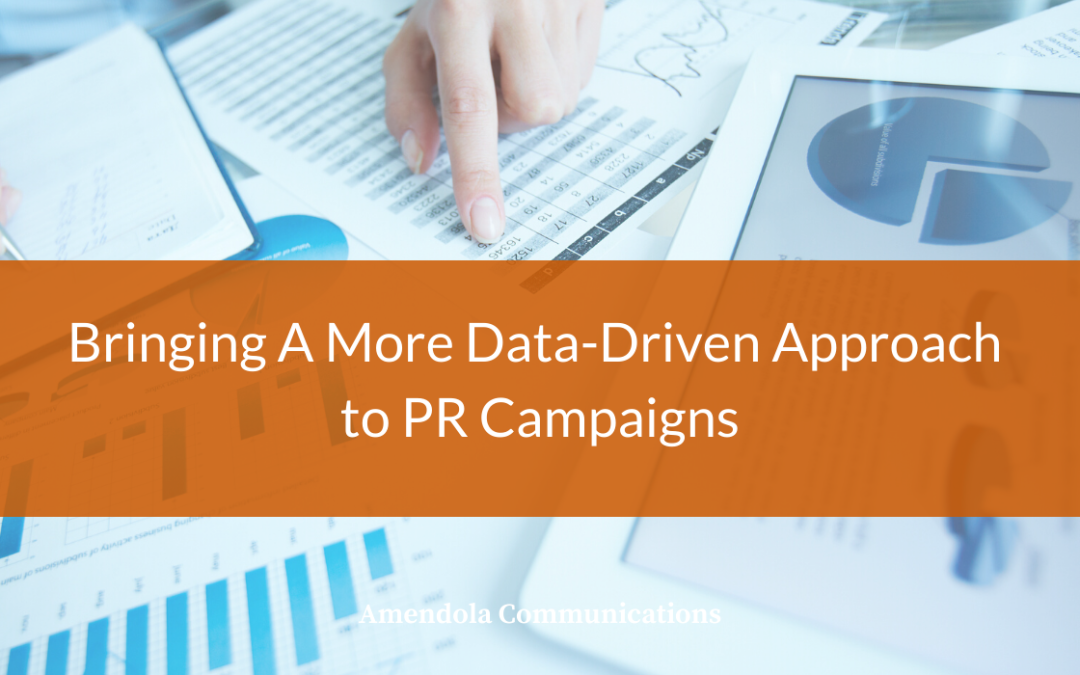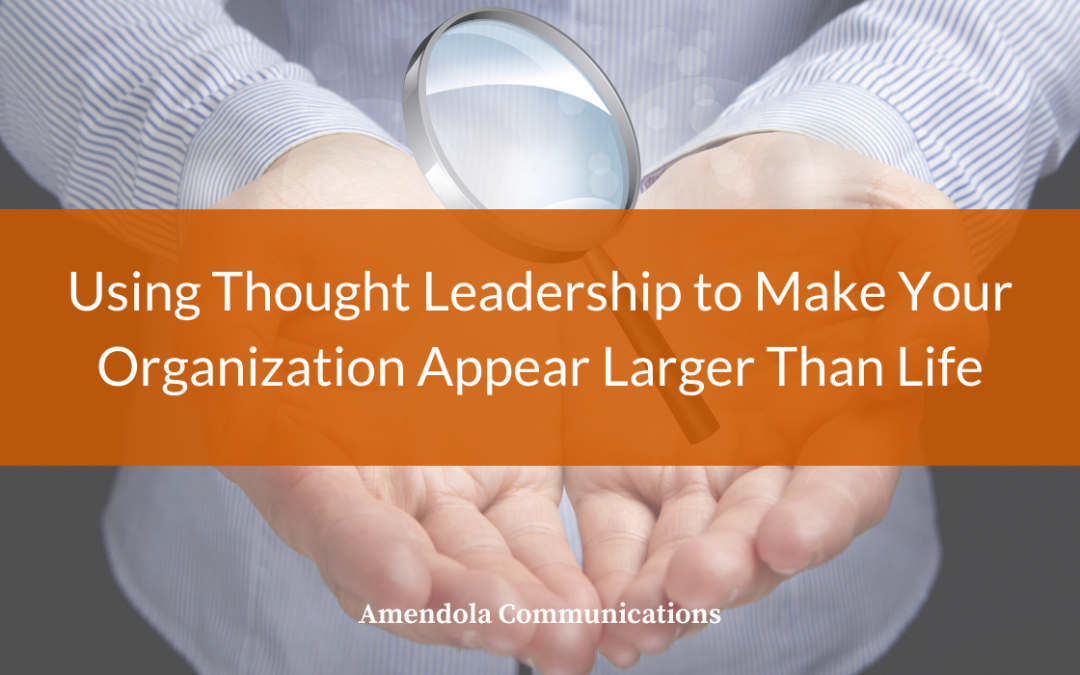
by Jodi Amendola | Oct 14, 2020 | Blog
Many healthcare, life sciences and healthcare IT marketers may not realize it, but virtual events (such as online-only conferences) are not new. They’ve actually been around for roughly a decade – starting right about the time broadband connections became ubiquitous.
But you never heard about them? That’s not surprising, because they were pretty much treated as “less than” events. They were the sort of thing organizers would do when they didn’t have the resources to pull off a live event such as HIMSS, and organizations would participate in when they didn’t have the budget or personnel to attend live events.
Then came the COVID-19 pandemic and suddenly virtual conferences and other digital-only events started looking a whole lot more attractive, even to the big players.
That’s the world we live in for now. With many states restricting attendance at indoor events to a maximum of 50 people, it’s unlikely that we will be gathering together face-to-face anytime soon.
As someone who has walked countless concrete floors in countless poorly ventilated halls in countless cities across this great nation, I can tell you that’s not all bad news. My feet have never felt better as an adult, and my shoes have lasted far longer than they usually do.
Of course, even if the ability to hold in-person conferences and other events has been curtailed that doesn’t mean the need has gone away. And suddenly, almost overnight, virtual conferences (and other virtual events) have gone from fighting for scraps in marketing budgets to being front-and-center in many organizations’ plans.
Since it appears we’re going to be stuck in COVID-19 limbo for the foreseeable future, savvy marketers will want to learn the best ways to take advantage of these virtual events opportunities. Fortunately, I addressed this very topic in a recent post for the Forbes Agency Council blog, which you can read here:
https://bit.ly/33y3zEy
In it I cover not only ways to maximize the benefits of virtual conferences but also other types of virtual events such as webinars, various forms of content and even video conferences.
Instead of pining for the days of stale, overpriced sandwiches, never-ending, never-moving taxi lines and nondescript hotel rooms where previous guests clearly violated the “no smoking” rules, give the post a look. And afterwards, if you find you need some help in executing some of these ideas for virtual events, give me a call or shoot me a note. My Zoom is always open.
by Jodi Amendola | Jul 1, 2020 | Blog
One of the late George Carlin’s most famous comedy bits was his list of oxymorons, or as he put it words that don’t go together with other words. He used examples such as ‘jumbo shrimp’, ‘exact estimate’ and ‘military intelligence’ to make his point.
There is one more phrase I’d like to add to the list: honest self-evaluation. Pulling off the blinders and seeing ourselves as we really are is one of the most difficult things in the world to do.
We all think we sing a little better than we do (especially after a couple of cocktails), or look better in that dress designed for models who are built like coat hangers, or can decorate our homes as well as Martha Stewart. That’s the way our brains are wired, to make us feel good about ourselves so we can get on with our daily lives instead of curling up into a little ball in the corner as tears of inadequacy roll down our cheeks with only our ever-adoring dogs giving us comfort.
The same is true in business. We often see our PR and marketing programs the way we want to see them instead of the way they really are. There’s nothing like a little confirmation bias to help us avoid the ugly truth.
But just because you believe something doesn’t make it true. That’s why it often helps to bring in another set of eyes to perform a PR and marketing audit of your integrated program. As my recent blog post from the Forbes Agency Council points out, an impartial third party “one that had nothing to do with developing or executing the current program” can often help you see what you’re actually doing well and shore up any areas you might have missed.
An in-depth audit of your integrated marketing program will typically look into nine areas:
- Current messaging
- Share of voice/sentiment versus competitors
- Media targets and their value
- Overall content strategy
- Existing byline articles and case studies
- Press releases
- Speaker and award targets
- Speaker and award applications
- Social media strategies and posts
To learn more, be sure to read the full post here.
Oh, and be sure to tune up that singing voice. Karaoke night is coming up soon.

by Jodi Amendola | Apr 29, 2020 | Blog
As the presidential election cycle heats up we are hearing more and more about how certain campaigns are making (and have made) imaginative use of data to help boost their candidates’ chances of success. A good example is a story I heard recently about the early stages of Michael Bloomberg’s now-abandoned campaign.
According to the story, the campaign did some research to determine where the 50-100 most influential TV political talking heads live. They then made an effort to place yard signs in those neighborhoods, and perhaps all along the pundits’ route to work, to make it look like there was an organic groundswell of support for the former mayor of New York City so they would talk about it.
Pretty clever if true, wouldn’t you say? What’s more significant is that it’s plausible.
We’ve all heard stories about campaigns using sophisticated analytics to micro-target ads on social media. They may have hundreds or thousands of data-driven variations designed specifically to push exactly the right buttons of the individual who sees those ads.
In other words, the ads I see may be very different than the ads you see or our neighbors see. But they are meaningful to each of us.
One area of integrated marketing that has typically been difficult to quantify in this way is public relations. This is due to the nature of PR itself.
When you see an ad on the Internet or TV, receive a marketing email or even get a piece of snail mail, there is usually a next step you can take. You can click on link (sometimes inadvertently, thereby dooming you to forever see messages that make your blood boil), heed the urgent yelling to “CALL NOW!!!,” text a five-digit number, etc.
With PR, however, that is usually not the case. To respond to an article that captures your interest you actually have to go out of your way (the horror!) to search for a company. Or at least type in a URL. Without an action, it’s difficult to get a read on just how effective the PR campaign has been in capturing the hearts and minds (and potentially the wallets) of your target audience.
Difficult, but not impossible. Earlier this year I wrote the blog post “Three Ways to Make Your PR Campaigns More Data-Driven” for the Forbes Agency Council. It offers some key insights not only into how to measure the effectiveness of your PR campaigns but also what to measure. (SPOILER ALERT: It’s not ad equivalency, which has always been one of the worst measures of the quality of PR.)
If you’d like to learn what those ways are, follow this mercifully shortened link to the original article.
While PR may still not have the sophisticated analytics of the more advanced election campaigns, it has definitely come a long way in the last few years. Be sure you’re up on all the latest options so you can take advantage of them.
There are plenty of classes you can take. Or you can shortcut the process by letting a data-driven PR agency like Amendola Communications do it for you.
Interested? Send me an email or shoot me a text and we’ll help you make your campaign a winner.

by Jodi Amendola | Feb 12, 2020 | Blog
Throughout my career, whenever I have done a SWOT (strengths, weaknesses, opportunities, threats) analysis with a health IT startup one of the most common weaknesses or threats their executives offer is the small size of their organizations. They may have the greatest innovation in healthcare since the Xray, but they fear it’s going to be difficult to get cost-conscious providers or payers to implement the technology or even listen to their pitch when it comes from an organization they don’t know.
Of course, that problem isn’t limited to health IT. It’s common across most industries. Unless an organization is in that 2.5% of all companies that Geoffrey Moore classified as “innovators,” or maybe the 13.5% that are “early adopters,” most organizations are too risk-averse to try a new product or service from an unknown entity.
So what’s the solution? Stop being an unknown. That’s where a thought leadership campaign can be a difference-maker.
In my latest post for the Forbes Agency Council, I explain how thought leadership can take a small organization and, following the advice of Chinese general Sun Tzu, make it look larger than life. Here’s a quick excerpt:
“You can use this to your advantage by engaging in an organized, consistent thought leadership program that shares that knowledge and helps you get prospects and customers aligned with your way of thinking. Once they believe in what you’re saying, you can guide the conversation more effectively and negate your competitors’ bigger marketing budgets. When you do that through earned media, such as media interviews or bylined articles that are accepted for publication, rather than paying for advertising or content, your thought leadership will carry even more weight and can have a halo effect.”
The post then covers five keys to taking advantage of this strategy, including:
- Offer different types of content. This is especially important if your media universe is small. The more different types of content you can offer (articles, infographics, eBooks, etc.) the more tools you have to reach an audience.
- Know things that others don’t (or at least don’t share). No one wants to hear the same old ideas being hashed out. Most businesses are started, and products are introduced, because there is a belief that there has to be a better way to do something than what currently exists. Share those ideas with others.
- Be controversial. This is especially true these days, in the era of social media when it seems like everyone is up in arms over everything. Taking strong stands instead of playing it safe and bland generally moves you to the front of the line in the media’s eyes.
- Make the content understandable. People won’t buy what they don’t understand. Keep explanations in thought leadership pieces simple and you will have a much better chance of reaching a broader audience.
- Reduce, reuse, recycle. In a small organization it can be difficult to get enough time with the subject matter experts to constantly develop new content. But all content doesn’t have to be new. Look for ways to re-purpose content (or pieces of it) in various formats to get the best mileage out of every piece you create.
Those are the highlights. For a more in-depth explanation of these points (and a lot of other great ideas from other contributors) be sure to head over to the Forbes Agency Council blog. It will be time well spent.
by Jodi Amendola | Aug 9, 2019 | News
POST WRITTEN BY
Jodi Amendola
Jodi Amendola is CEO of Amendola, an award-winning healthcare and technology public relations and marketing agency based in Scottsdale, AZ.
Ah, social media. Has any invention ever been simultaneously so loved and so hated?
The dream, of course, is that social media connects us all in a community of understanding and shared experiences. We hope that others will share their experiences and connection to our brand and that their followers will do the same. It does happen sometimes. But there’s also a darker side to all that sharing — one that businesses must be aware of.
We’ve all heard stories about how viral videos (think: United Airlines) or other posts on major social platforms can damage an organization’s reputation. What starts out small can quickly gain momentum, and all of a sudden, you have a very visible PR crisis on your hands. …




